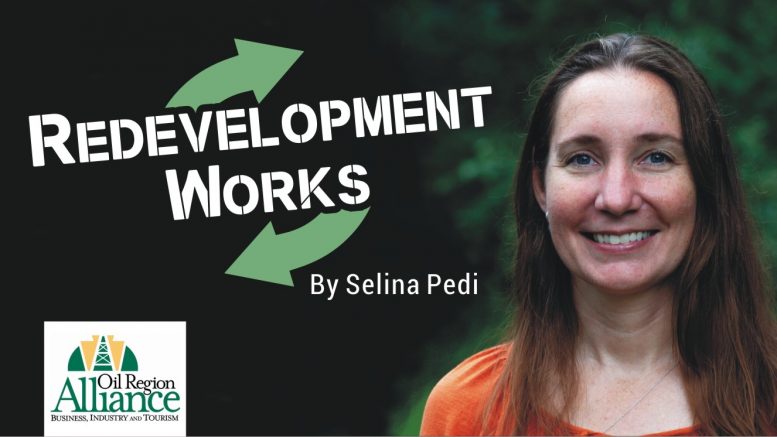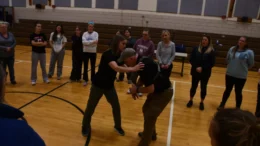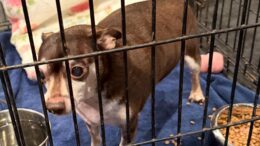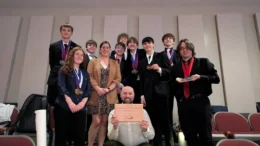Since we’ve been talking a fair bit recently about “what will be” and “what can be,” I figured it’s about time for a “what is” update! We’re fully into the grant-writing season, so unfortunately a lot of “what is” is… boring paperwork. Exciting for the potential it holds for future activity, sure, but the paperwork itself is both tedious and nerve-wracking! Federal grants, especially, can take over 100 hours of intensive work to complete, and we’ve submitted two in the last several weeks, with another due at the start of the year. So, if anyone is wondering where I’ve been recently, it’s most likely cloistered away in front of my computer!
Aside from paperwork, though, on-the-ground projects are still moving along. Over at the Community Farm on the AC Valley school grounds, the raised beds have officially been tucked in for their long winter’s nap. We’ve done a bit more clearing of the woodland trail, and we’re now busy drawing up plans for the new features we plan to add in the spring, such as a tool shed, gravel paths, more fruit trees, and pollinator- and bird-friendly flower beds. We’ve applied for a Bird-Friendly Habitat certification from the Audubon Society, too, so we should have a lovely new plaque soon!
On the brownfield side of things, the sampling and assessment of the Fuchs property in Emlenton are still trucking along. Our environmental engineers have now completed two rounds of sampling, and a third is underway. Each round thus far has answered some questions (no one is going to grow a second head from being on or near the Fuchs site, for example), but raises others. We’re currently sampling as deep and wide as possible to find the boundaries of soil contamination, so we know where we need to remediate, and where we don’t!
In Oil City, we are moving forward with sampling on the former Kraft site, which will take some time, but the ball is rolling. We’re also very close to starting a city-wide brownfield inventory with the PA Department of Environmental Protection. The DEP has been a tremendous ally and resource in our brownfield journey thus far, and this new inventory will help us identify yet more brownfield sites within Oil City, allowing us to prioritize them for remediation and redevelopment.
Aside from any formal inventory process, we’ve identified a few new brownfields throughout the region, and are working with the owners to get those evaluated. The first step for these is to talk with DEP and the EPA to see what assessments may have been done in the past, and then undertake current assessments as needed to know what we’re dealing with before we agree to take control of the sites and apply for remediation funding. From old concrete yards to former landfills to abandoned machine shops, this area has no shortage of contaminated properties!
If you’re interested in learning more or being part of our ongoing redevelopment efforts, whether it’s community development, brownfield remediation, or region-wide economic development, give a holler!
Selina Pedi is the Oil Region Alliance redevelopment manager. She can be reached by email at spedi@oilregion.org.




































